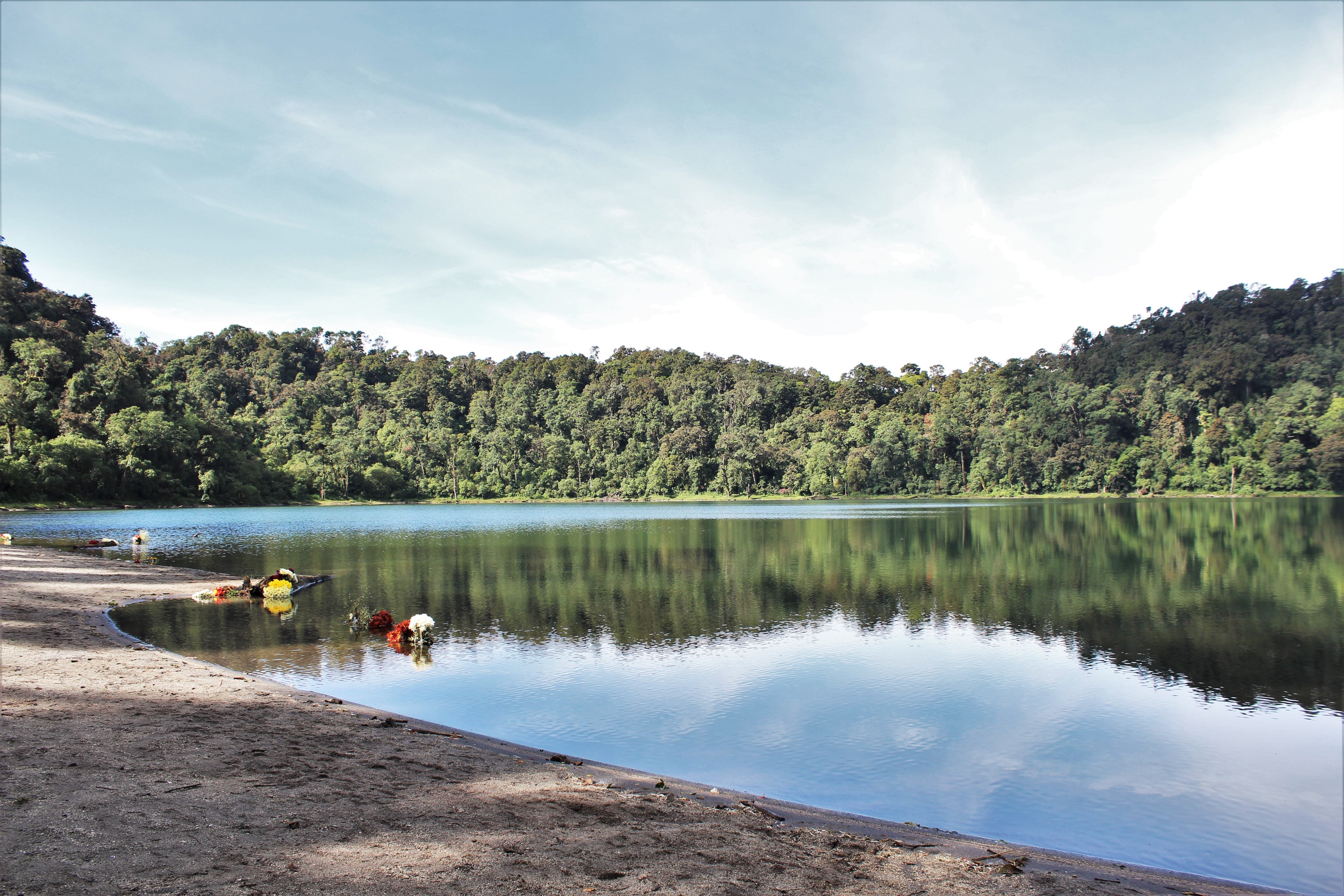
In our last blog we were talking about Active volcanoes of guatemala, now we'll talk about volcanoes that have a lake on their craters. You can find this is surprising, volcanoes with lakes on top of them, however, this occurs as a result of a past explosion that left a pronounced depression in the central part of the crater over time. "Volcanic lakes" act as if they were a filter since they trap or dissolve the acid gases that emanate from volcanoes. Its formation and permanence are also conditioned by the composition of the soil at the bottom of the crater, it must be impermeable, this is achieved if the volcano has clay soil that prevents the filtration of water. And of course, it needs constant rains to ensure that the amount of water is greater than evaporation.
The volcanoes with lakes in their craters are Ipala Volcano and Chicabal Volcano. On the other hand, the Pacaya Volcano also has a lake on one of its trails, this laguna is called Laguna Calderas. Another interesting site in this category is Laguna de Ayarza, which is on the caldera of an extinct volcano.
.
Volcán y Laguna Ipala
Located on the border between Chiquimula and Jutiapa Departments in the south of the country with an altitude of 1650 meters (5413 feet) above sea level and it has been the home to a lake in the center of its crater for thousands of years. This volcano requires little effort to climb, although it can be exhausting due to its hot weather. It takes about 2 hours to reach the top, where the weather becomes much cooler and even cold and windy, having a fascinating view of the lake and surroundings which are full of vegetation.
.

Volcán y Laguna Chicabal
Chicabal is located in the township of San Martín Sacatepéquez, inside Quetzaltenango Department, in the western region of Guatemala. It has an approximate height of 2900 meters (9514 feet) above sea level and has densely wooded, humid, and cold trails which means that generally, when arriving at the lake, it’s covered with fog. Its crater is a sacred place, the Chicabal lake, a lake with crystal clear water that is surrounded by breathtaking trails. The energy and magnetism that this place offers make the experience pleasant and peaceful. Here, the Mayan spirituality is combined with the natural environment and the mountainous landscape.
.

Around the lake, you will be able to observe flowers of different colors and crosses, since they are part of the ceremonies that are carried out in the place.
VOLCANOES SURROUNDING ATITLÁN LAKE
Atitlán Lake is known to be one of the most beautiful places in Guatemala where approximately 85,000 years ago, there was an impressive and gigantic volcanic explosion, which ashes reached Florida in the north and Panama in the south.Thanks to this explosion, this beautiful lake exists, surrounded by hills and volcanoes that offer dense and thick forests. On these trails, you can watch a great variety of birds, from timid woodpeckers to the Quetzal, Guatemala’s national bird.
Around the lake you will find Atitlán, Tolimán, San Pedro, and Paquisis volcanoes, thus forming an impressive landscape.
.

Volcán Atitlán
With a height of 3,537 meters (11,604 feet) above sea level, this beautiful volcano is the place selected for altars or sacred settings for the locals and it{s the fourth highest volcano of Guatemala. At its base, it’s joined with Tolimán volcano, which is its twin volcano, and at the top, its crater is wide and clear and it offers a wonderful 360 view with impressive landscapes: Lake Atitlán in its totality to the north, the Pacific Coast in the south, the Acatenango and Fuego volcanoes in the east, and the volcanoes located in Quetzaltenango and San Marcos to the west. The hike of this volcano is demanding and the climbing takes approximately six hours.

.
San Pedro Volcano
Beautiful, humid and, green forest that fills the lungs with fresh air and makes us feel like we are in a tale. It is located in San Pedro La Laguna. This volcano is the oldest of four stratovolcanoes constructed around the lake. The 3020-meters-high (9908 feet) San Pedro forms a forested cone that rises above the Southwest side of scenic Lake Atitlán. The shallow summit crater of San Pedro is breached to the northwest and partially filled by a low mound of lava.
Tolimán Volcano
Stratovolcano located on the shores of Lake Atitlán, in the department of Sololá, Guatemala. It has an altitude of 3,158 meters (10,360 feet) above sea level and its climbing time is approximately seven to eight hours having slopes which are quite steep. It has wide ravines, forests, and a closed jungle. At the bottom, on the side of the volcano, there are large coffee plantations, fruit trees, and cornfields. It has a spectacular view of the lake, the San Pedro volcano, and the Atitlán volcano.

.
Paquisis Volcano
At Heart of Travel, we value nature and respect the local communities of each space. The local guides are trained to make this experience safe and full of learning. Each of these volcanoes must be respected because for many there is a spiritual connection with the mountain.
References:
Carr M J, 1984. Symmetrical and segmented variation of physical and geochemical characterisitics of the Central American volcanic front. J. Volcanol. Geotherm. Res., 20: 231-252. https://doi.org/10.1016/0377-0273(84)90041-6


Comments (0)
Back to News